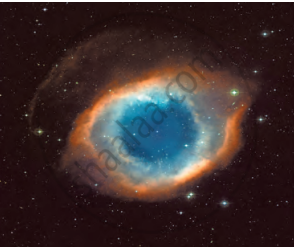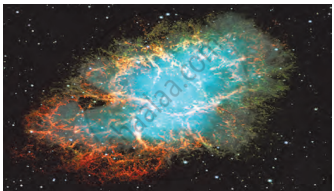Topics
Living World and Classification of Microbes
Health and Diseases
Force and Pressure
- Force
- Types of Force: Contact Force
- Types of Force: Non-Contact Force
- Balanced and Unbalanced Forces
- Inertia and Mass
- Types of Inertia
- Thrust and Pressure
- Pressure on Solids
- Pressure of liquid
- Gas Pressure
- Atmospheric Pressure
- Buoyancy Force (Upthrust Force)
- Archimedes Principle
- Density of substance and Relative density
Current Electricity and Magnetism
Inside the Atom
Composition of Matter
- Matter (Substance)
- Characteristics of Particles (Molecules) of Matter
- States of Matter
- The Solid State
- The Liquid State
- The Gaseous State
- Elements
- Types of Element: Metals
- Types of Element: Non-metal
- Type of Element: Metalloid
- Compound
- Types of Compound
- Mixture
- Types of Mixtures
- Solution
- Suspension Solution
- Colloidal Solution
- Molecular Formula of Compounds
- Valency
Metals and Nonmetals
- Types of Element: Metals
- Physical Properties of Metals
- Chemical Properties of Metal
- Types of Element: Non-metal
- Physical Properties of Non-metal
- Types of Element: Non-metal
- Chemical Properties of Non-metal
- Type of Element: Metalloid
- Uses of metals and nonmetals
- Nobel Metal
- Purity of Gold
- Corrosion of Metals
- Alloy
Pollution
- Pollution and Its Types
- Air Pollution and Its Causes
- Effects of Air Pollution
- Prevention of Air Pollution
- Water Pollution and Its Causes
- Effects of Water Pollution
- Prevention of Water Pollution
- Soil Pollution and its Causes
- Effects of Soil Pollution
- Prevention of Soil Pollution
- Relationship of Soil Pollution with Air and Water Pollution
- Laws for Control, Regulation, and Prevention of Pollution by Indian Government
Disaster Management
Cell and Cell Organelles
- Cell: Structural and Functional Unit of Life
- Prokaryotic and Eukaryotic Cell
- Plant Cell and Animal Cell
- Structure of the Cell
- Cell Wall - “Supporter and Protector”
- Plasma Membrane
- Cytoplasm - “Area of Movement”
- Nucleus - “Brain” of the Cell
- Endoplasmic Reticulum (ER)
- Golgi Apparatus - "The delivery system of the cell"
- Lysosome - “Suicidal Bag”
- Mitochondria - “Power House of the Cell”
- Plastids
- Non-living Substances Or Cell Inclusion
Human Body and Organ System
- Human Body
- Human Organ System
- Mechanism of respiration-Breathing
- Human Respiratory System
- Blood Circulatory System in Human
- Human Heart
- Blood Vessels
- Circulation of Blood in the Heart (Functioning of Heart)
- Heart Beat - Heart Sounds "LUBB" and "DUP"
- Blood
- Composition of Blood: Plasma (The Liquid Portion of Blood)
- Composition of Blood: Red Blood Cells (Erythrocytes)
- Composition of Blood: White Blood Cells (Leukocytes)
- Composition of Blood: Blood Platelets (Thrombocytes)
- Functions of Blood
- Blood Transfusion and Blood Groups (ABO and Rh system)
- Blood Pressure (B.P.)
- Heart Related Conditions
Introduction to Acid and Base
Chemical Change and Chemical Bond
Measurement and Effects of Heat
Sound
Reflection of Light
Man Made Materials
Ecosystems
Life Cycle of Stars
- Stars with Initial Mass Less than 8 Times the Sun’s Mass
- Stars with Mass Between 8 and 25 Times the Sun’s Mass
- Stars with Mass Greater than 25 Times the Sun’s Mass
Stars with Initial Mass Less than 8 Times the Sun’s Mass:
End stages of stars having initial mass less than 8 times the mass of the Sun (Mstar < 8 MSun)

The outer gaseous envelope, which is thrown out during the formation of a white dwarf, is at the centre
- Red Giant Stage: Stars in this group expand significantly, increasing their size by 100 to 200 times. During this stage, they are called red giants, named for their reddish colour caused by their cooler temperature.
- White Dwarf Formation: After the red giant stage, the outer gas layers of the star are thrown into space. The core contracts to a size similar to Earth but with much higher mass, leading to an extremely dense star. The pressure due to electrons balances the gravitational force, making the star stable.
- Final Stage: The star becomes a white dwarf, a small, hot, and dense star. Its temperature decreases over time, but its size and mass remain unchanged forever. A white dwarf is the end stage of stars in this mass range.
Stars with Mass Between 8 and 25 Times the Sun’s Mass:
End stages of stars having mass between 8 and 25 times the mass of the Sun (8 MSun < MStar < 25 MSun):

A recent picture of the supernova explosion, which was first seen in 1054 A.D
- Red Giant and Supergiant Stages: These stars expand into red giants and later into supergiants, increasing their size by up to 1000 times.
- Supernova Explosion: At the end of their evolution, these stars undergo a supernova explosion, a massive and energetic event that can make the star visible even during the daytime.
- Neutron Star Formation: After the explosion, the core contracts to a size of about 10 km, forming a neutron star. Neutron stars are incredibly dense and are made entirely of neutrons.
- Final Stage: The pressure of neutrons balances the gravitational force, making the neutron star stable forever. A neutron star is the end stage of stars in this mass range.
Stars with Mass Greater than 25 Times the Sun’s Mass:
End stages of stars having mass larger than 25 times the mass of the Sun (Mstar > 25 MSun):
- Red Giant and Supergiant Stages: These stars also pass through the red giant and supergiant stages, just like the stars in the second group.
- Supernova Explosion: At the end of their evolution, these stars undergo a supernova explosion.
- Black Hole Formation: After the explosion, the remaining core continues to contract indefinitely because no pressure is strong enough to balance the immense gravitational force. The density and gravitational force become so high that not even light can escape from the star.
- Final Stage: The star becomes a black hole, an object that absorbs everything around it and cannot be seen directly. Black holes are the end stage of stars with extremely high masses.
| Initial Mass of the Star | End Stage of the Star |
|---|---|
| < 8 MSun | White dwarf |
| Between 8 to 25 MSun | Neutron star |
| > 25 MSun | Black hole |
If you would like to contribute notes or other learning material, please submit them using the button below.
